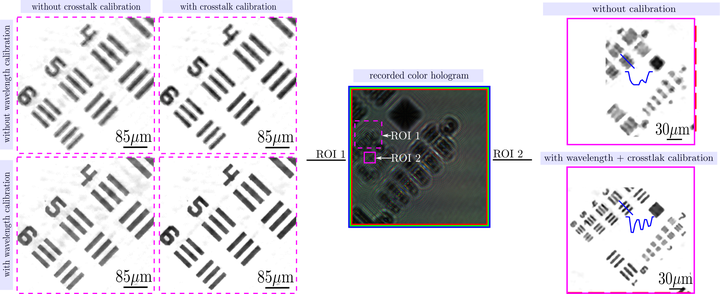Improving color lensless microscopy reconstructions by self-calibration
In SPIE Photonics Europe
 Illustration of the regularized reconstruction of a color hologram.
Illustration of the regularized reconstruction of a color hologram.
Abstract
Lensless color microscopy is a recent 3D quantitative imaging method allowing to retrieve physical parameters characterizing microscopic objects spread in a volume. The main advantages of this technique are related to its simplicity, compactness, low sensitivity of the setup to vibrations and the possibility to accurately characterize objects. The cost-effectiveness of the method can be further increased using low-end laser diodes as coherent sources and CMOS color sensor equipped with a Bayer filter array. However, the central wavelength delivered by this type of laser is generally known only with a limited precision and can evolve because of its dependence on temperature and power supply voltage. In addition, Bayer-type filters of conventional color sensors are not very selective, resulting in spectral mixing (crosstalk phenomenon) of signals from each color channel. Ignoring these phenomena leads to significant errors in holographic reconstructions. We have proposed a maximum likelihood estimation method to calibrate the setup (central wavelength of the laser sources and spectral mixing introduced by the Bayer filters) using spherical objects naturally present in the field of view or added (calibration objects). This calibration method provides accurate estimates of the wavelengths and of the crosstalk, with an uncertainty comparable to that of a high-resolution spectrometer. To perform the image reconstruction from color holograms following the self-calibration of the setup, we describe a regularized inversion method that includes a linear hologram formation model, sparsity constraints and an edge-preserving regularization. We show on holograms of calibrated objects that the self-calibration of the setup leads to an improvement of the reconstructions.